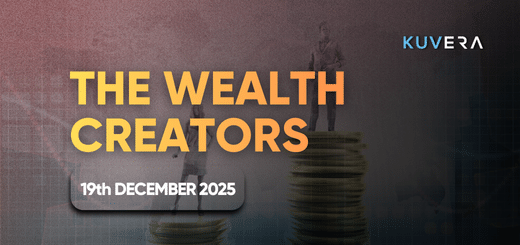If you had bought silver in 1980, your returns today would be… nil.
No, that’s not a typo. The calculation assumes you bought silver around January 1, 1980, and held it all this while. Four decades later, the shiny metal wouldn’t have made you a dime. And that’s where the story of Nelson Bunker Hunt and his brothers begins.
Bunker Hunt was oil-rich, Texas-rich, but paranoid about not staying that way. With U.S. inflation running above 10%, he feared paper money would become just that: paper. So, the Hunt brothers decided to hedge. Not with gold, but with silver, the “poor man’s gold.”
Why silver?
Well, for one, gold ownership was restricted in the U.S. until 1975. Silver, on the other hand, was legal, volatile, and had industrial use, from film to electronics. More volatility meant more profit if you could move the market. And move it they did.
At their peak, the Hunts controlled nearly one-third of the world’s deliverable silver. They bought around 100 million ounces of physical silver, stashing it in Swiss vaults, and controlled another 100 million ounces through futures contracts on COMEX and CBOT. The price of silver shot from about $2 an ounce in 1973 to almost $50 in early 1980 — the year of their reckoning.
Then, things went south.
By 1980, commodity exchanges had enough of the game and imposed several restrictions, triggering a steep fall in prices. The Hunts, who had massive open long positions, faced a $134 million margin call. Considering the billions they had tied up in silver, it shouldn’t have been impossible, but the money was locked up, and their broker needed cash. Unfortunately, the Hunts were travelling and unreachable when the call came.
Their broker had no access to liquid funds and was forced to dump their positions, triggering “Silver Thursday”, a total market meltdown.
Bunker Hunt never recovered. The empire built on silver dust collapsed under the weight of its own leverage.
Why bring this up now?
Because silver earlier this month touched $50 an ounce, after more than four decades. And yet, if you had bought silverware on January 1, 1980, your return would still be nil.
So why did silver finally revisit those historic highs?
This time, there were no billionaire hoarders. Instead, silver’s dual appeal — part industrial demand, part safe-haven asset — did the trick. And there was also the rub-off from gold.
Over the past few years, central banks around the world have been hoarding gold. Their vaults, once overflowing with dollars and U.S. Treasuries, are now being rebalanced. Central banks rushed to buy gold amid the war in Ukraine, tensions in the Middle East, and a weakening dollar. The final spark came from Donald Trump’s tariff war earlier this year.
Central banks have been buying over 1,000 tonnes of gold annually since 2022, more than double their usual pace. They now hold an estimated 36,344 tonnes of gold, surpassing their combined holdings of dollars and Treasuries for the first time since 1996.
That sparked FOMO among retail investors, too. Gold ETFs saw record inflows, so much that some funds struggled to find avenues to deploy the cash. Trade tensions, U.S. rate cuts, and Russia’s persistence in Ukraine all added fuel to the gold rush through 2025.
For a while, it looked like nothing could stop gold and silver. Predictions were flying that the two metals would outshine every other asset class in the coming years.
But as Mark Twain said, history doesn’t repeat itself, but it often rhymes.
In the last week, prices of both metals fell over 6% amid reports of easing trade tensions and a stronger dollar. Profit-taking also kicked in.
So, is gold old?
Not quite. Even as this newsletter was being written, prices ticked up again ahead of key US data that could shape the Fed’s next move.
Profit-taking may continue, but geopolitics isn’t done twisting yet. China may not fold, Trump won’t blink, Putin won’t soften, and the dollar’s strength remains data-dependent.
If history is any guide, the metal may lose some shine, but the story of greed, fear, and silver dreams never gets old.

Oh, Calcutta!
Talking of rising asset prices, cast your mind back to 2001, when the prices of the so-called K-10 stocks soared. The “K” stood for Ketan Parekh, a stockbroker who was accused of artificially inflating the prices of a select set of companies. When the bubble burst, it left deep scars. Some never recovered, including the Calcutta Stock Exchange (CSE).
This year, the second-oldest stock exchange in India reportedly celebrated what its members called their last Diwali. The exchange had been on life support for years. Many of its members were among the hardest hit by the Ketan Parekh scam, with several defaulting on payments. SEBI had trained its guns on the exchange, and regular trading operations ceased in 2013.
The regulator had pulled up CSE for failing to meet key compliance norms, including the requirement for a separate clearing corporation and a minimum turnover threshold. The exchange fought back, first in court, then in higher courts, but it was already running out of money. Recently, it decided not to pursue the case further. Employees have reportedly been offered voluntary retirement, and even the iconic building may soon go on the block.
A stock exchange, in many ways, is like a place of faith. It survives on integrity and liquidity, which help it absorb shocks and setbacks. CSE lacked both. Over time, most of the liquidity in India’s equity markets was cornered by the NSE and BSE, leaving only crumbs for regional exchanges.
Founded in 1908, CSE wasn’t far behind BSE in its early years. But after the Ketan Parekh episode, when members couldn’t recover their losses, trader confidence vanished, and with it, the exchange’s relevance.
To be sure, the exchange has not confirmed its closure.
CSE is not alone. Over the past few decades, other regional exchanges such as Ahmedabad, Delhi, and Madras have also shut down. This has given way to the duopoly of NSE and BSE.
Slippery Sanctions
Washington this week raised the stakes against Moscow by imposing sanctions on Russia’s two biggest oil exporters, Rosneft and Lukoil. The move came after yet another failed attempt by US President Donald Trump to broker peace in Ukraine.
India, the second-largest importer of Russian oil, is expected to feel some of the ripple effects. But will it really? New Delhi has often managed to navigate such sanctions through clever trading arrangements and by using loopholes that Washington itself sometimes leaves open. A watertight sanctions regime against Moscow would inevitably hurt the US too, so this time Trump has targeted only the companies, not Russian oil exports as a whole.
The sanctions may nudge crude prices up slightly, but not enough to pinch consumers in the US. Oil is still trading at multi-year lows, and even a 10% increase would not make much difference at American fuel pumps.
For India, the situation is slightly more complicated. Since the sanctions apply to Russian firms and not to the oil itself, Indian refiners could still find ways to keep the barrels flowing. Officially, India only complies with United Nations–mandated sanctions, such as those imposed on Venezuela and Iran.
The real test will be how refiners, particularly Reliance Industries, adapt to the new restrictions. Much depends on whether President Putin chooses peace or if New Delhi and Washington finally reach a trade deal that has been in discussion for months. Either way, India’s energy diplomacy is about to be tested once again.
Leash on AI
Last month, this newsletter had reported how several Indian celebrities are rushing to court to stop impersonation of their personality, including their voice. One big reason for this legal scramble is the rise of AI-generated deepfakes. And just how “deep” are these fakes? Try this for size: a fake movie trailer featuring Akshay Kumar as a state chief minister in a film that doesn’t exist, and a “new” song by Asha Bhosle, created by cloning her voice.
Now, the government has entered the scene. In a draft notification, the IT Ministry said: “Such content can be weaponised to spread misinformation, damage reputations, manipulate or influence elections, or commit financial fraud.”
Hence, the government has proposed that all AI-generated content on major social media platforms carry a clear disclaimer — a digital “fake alert” watermark covering at least 10% of the image, video, or audio. The aim is simple: make sure no one mistakes a deepfake for the real deal.
Platforms with more than 5 million users will be responsible for ensuring the rules are followed. According to the draft rules, such platforms will have to obtain a user declaration on whether uploaded information is synthetically generated, deploy “reasonable and proportionate” technical measures to verify such declarations and also ensure that synthetically generated information is clearly labelled or accompanied by a notice indicating the same.
Market Wrap
Indian stocks rose for the fourth straight week, marking their longest winning streak this calendar year. The Nifty 50 and Sensex gained 0.3% each, after rising about 3% in the previous week.
IT and metal indices advanced during the week, while most consumer goods stocks slipped.
If not for Friday’s sell-off, the weekly gains would have been stronger. Comments by Trade Minister Piyush Goyal hinting at hurdles in trade talks with the US triggered profit booking.
“We are in active dialogue with the EU. We are talking to the US, but we do not do deals in a hurry and we do not do deals with deadlines or with a gun to our head,” Goyal is reported to have said at Berlin Dialogue in Germany.
Hindalco, Shriram Finance, and Infosys were the top gainers this week, rising 6–7%. Most financials ended lower, with ICICI Bank down 4% and HDFC Bank nearly 1%. Other major losers included Eternal, UltraTech, Adani Ports, HUL, and Eicher Motors.

Other Headlines
- Reliance Industries to halt oil imports from Russia after US sanctions on Rosneft
- Hero MotoCorp enters UK with Hunk 440 bike priced at 3,990 euros
- Eli Lilly allows Cipla to sell weight-loss drug under new brand Yurpeak in India
- Tata Technologies to hire more locals in US as Donald Trump cracks down on immigration
- Jaguar Land Rover cyberattack may cost UK economy about $2.5 billion, says cybersecurity firm
- India’s infrastructure output growth slows to three-month low of 3% in September
- Ola Electric founder Bhavish Aggarwal named in police complaint over employee suicide
- Germany’s Thyssenkrupp in talks with Jindal Steel over sale of steel unit
- Ecommerce startup Meesho to raise Rs 4,250 crore via fresh issue in IPO
- Hindustan Unilever Q2 net profit rises 3.8% to Rs 2,694 crore
- Colgate Palmolive India Q2 profit falls 7.2% to Rs 328 crore as GST cut disrupts sales
- HDFC Bank Q2 standalone net profit rises 11% to Rs 18,641 crore, beats forecasts
- ICICI Bank standalone net profit rises 5% to Rs 12,359 crore, tops estimates
- IndusInd Bank swings to Q2 net loss of Rs 436 crore from profit of Rs 1,331 crore year ago
That’s all for this week. Until next week, happy investing!
Interested in how we think about the markets?
Read more: Zen And The Art Of Investing
Watch here: Investing in International Markets
Start investing through a platform that brings goal planning and investing to your fingertips. Visit kuvera.in to discover Direct Plans and Fixed Deposits and start investing today. #MutualFundSahiHai #KuveraSabseSahiHai










